Sedum Roofs: A sustainable approach to water management
8 March 2024In the battle against climate change and the increasing threat of water-related issues, green sedum roofs are increasingly recognized as an innovative and sustainable solution for water management. This sustainable roofing, covered with succulent plants and other drought-tolerant vegetation, offers numerous benefits in the realms of water management, environment, and livability, making it a valuable investment for cities and building owners.
- Water retention and delayed drainage
One of the key advantages of green sedum roofs is their ability to capture and retain rainwater. Instead of rain flowing directly from the roof into the drainage system, green roofs absorb a significant amount of water, aiding in reducing floods and slowing down the flow to the sewer system. This is particularly crucial in urban areas where paved surfaces disrupt the natural water cycle and increase the risk of waterlogging.
- Reduction of Urban Heat Island Effect
Green sedum roofs also contribute to reducing the urban heat island effect, a phenomenon where urban areas become significantly warmer than surrounding rural areas due to city development. Through water evaporation and heat absorption by vegetation, green roofs help lower the temperature of buildings and the environment, reducing the urban heat island effect and enhancing comfort levels in urban areas.
- Improvement of water quality
In addition to mitigating waterlogging, green sedum roofs contribute to improving water quality. The vegetation and substrate layer act as natural filters, removing pollutants from rainwater and preventing them from entering the sewer system. This results in cleaner surface water and contributes to the preservation of healthy ecosystems in waterways.
- Promotion of biodiversity and ecological balance
Green sedum roofs promote biodiversity and contribute to restoring ecological balance in urban areas. By providing habitats for plants, insects, and birds, green roofs encourage natural diversity and support the conservation of local flora and fauna. This contributes to the creation of resilient and healthy urban ecosystems essential for a sustainable living environment.

Rainwater management with lightweight cassette green roof system
MobiRoof ECO is a lightweight extensive green roof system with a water retention ranging from 20 liters to 30 liters per square meter. The cassettes are available with two types of vegetation: MobiRoof ECO – Sedum is equipped with 6 – 8 different types of Sedum. MobiRoof ECO – Sedum & WildFlower, in addition to sedum vegetation, features a wildflower mix with a variety of flowers, blooming herbs, and ornamental grasses (20 – 24 species).
Both types have a standard water storage capacity of 20 liters per square meter. By adding an optional retention layer, the capacity can be increased to a total of 30 liters per square meter.

Extensive green roof legislation
It is important to note that legislation can change, and specific rules and regulations depend on factors such as local zoning plans and building codes. For accurate and up-to-date information, it is advisable to contact local authorities or professional advisors in the field of construction and environmental regulations.
-
- The United Kingdom does not have specific national legislation regarding green roofs, but there may be applicable local building regulations.
- In some cases, green roofs may be part of sustainability and environmental objectives, and incentive measures may be available.
- Mobilane is a partner of the Green Roof Organisation (GRO). GRO is an independent not-for-profit Trade Association representing the UK Green, Blue, and BioSolar Roofing industries. On the GRO website, more information can be found regarding legislation and requirements that a green roof must meet.



